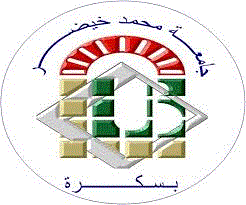| Titre : | QoS based approach for the web services discovery and selection using the content of OWLS |
| Auteurs : | Fattoum Nouari, Auteur ; Nadia Ben Seghier, Directeur de thèse |
| Type de document : | Monographie imprimée |
| Editeur : | Biskra [Algérie] : Faculté des Sciences Exactes et des Sciences de la Nature et de la Vie, Université Mohamed Khider, 2017 |
| Format : | 1 vol. (57 p.) / 30 cm |
| Langues: | Anglais |
| Mots-clés: | Semantic Web Services Discovery,Ontology,Quality of Service,OWL_S,Web Services Selection. |
| Résumé : |
Due to the increase of published Web Services (WS), finding the suitable WS that satisfies the user goals among discovered WS still needs deep investigations. The mission of Web service discovery is to seek an appropriate Web service for a client that based on the service descriptions of WS and the service requester's requirements. Nevertheless, the standard language used for encoding service descriptions does not have the capacity to specify the capabilities of a Web service. This problem leads to an ambiguity in the service discovery process. Semantic Web Services (SWS) are a research effort to automate the usage of WS. In this work, we propose a system that provides a semantic discovery solution using the content of OWL_S and the Quality of Service (QoS) in order to meet the user’s preferences. First, our system enhances semantically the list of keywords extracted from the elements that comprise the description of a user query. Second, an ontology matching process is used to discovers matching between the ontological terms of a service description and a user request by using a subsumption reasoning algorithm. Third, a filtering algorithm tries to select the best WS that match the user request. |
| Sommaire : |
Summary List of Figures ....................................................................................................... viii List of Tables ........................................................................................................... ix General Introduction ............................................................................................... 1 Part 1 State of The Art 1 Web Services ...................................................................................... 5 1.1. Introduction ........................................................................................................... 5 1.2. Introducing the Web Services ............................................................................................ 5 1.2.1. Service Oriented Architecture (SOA) : .......................................................................... 6 1.2.2. Web Service Standards Specifications : ........................................................................ 8 1.2.2.1. SOAP (simple object access protocol) : ............................................................... 8 1.2.2.2. WSDL (Web Services Description Langage) : .................................................... 9 1.2.2.3. UDDI (Universal Description, Discovery, and Integration) : ............................ 10 1.3. QoS (Quality of Services) : ..................................................................................... 11 1.3.1. QoS Properties and Characteristics : ............................................................................ 11 1.3.2. QoS Models and languages : ........................................................................................ 13 1.4. Conclusion ......................................................................................................... 13 2 Semantic Web & Semantic Web Services ......................................................... 14 2.1. Introduction ................................................................................................ 14 2.2. What is Semantic web ? ........................................................................................ 14 2.3. Semantic Web Technologies ..................................................................................... 15 2.3.1. Unicode and URIs : ............................................................................................ 16 2.3.2. Extensible Markup Language (XML) : ....................................................................... 16 2.3.3. Resource Description Framework (RDF) : ................................................................. 17 2.3.4. RDF Schema : .................................................................................................. 18 2.3.5. Ontologies : ...................................................................................................... 19 2.3.5.1. Ontologies Benefits : ................................................................................. 19 vi 2.3.5.2. OWL (Ontology Web Language) : ................................................................ 19 2.3.6. Logic and Proof : .......................................................................................... 20 2.3.7. Trust : ............................................................................................................. 20 2.4. Semantic Web Services ............................................................................................. 20 2.4.1. Proposed approaches for the realization of SWS : ....................................................... 21 2.4.1.1. OWL-S (Ontology Web Language for web Services) : ..................................... 21 2.4.1.2. WSMO (Web Service Modeling Ontology) : .................................................... 22 2.4.2. Semantic Web Services Discovery and Selection : ..................................................... 22 2.4.2.1. Semantic Web Services Discovery : .................................................................. 22 2.4.2.2. Semantic Web Services Selection : .................................................................... 23 2.5. Conclusion ............................................................................................................ 23 3 Related Works ..................................................................................................... 24 3.1. Introduction ........................................................................................................... 24 3.2. Related Publications ......................................................................................................... 24 3.3. Conclusion ................................................................................................................ 27 Part 2 Contribution 4 System Design .......................................................................................... 29 4.1. Introduction ............................................................................................................ 29 4.2. Motivations ............................................................................................................ 29 4.3. General Architecture ........................................................................................................ 30 4.4. General system functionality ........................................................................................... 32 4.5. Detailed Architectures ...................................................................................................... 32 4.5.1. SWS Publication: ......................................................................................................... 33 4.5.2. SWS Discovery: ........................................................................................................... 33 4.5.3. SWS Selection: ........................................................................................................... 35 4.6. Sequence diagrams............................................................................................................ 37 4.6.1. SWS publication scenario: ........................................................................................... 37 4.6.2. Service discovery scenario: .......................................................................................... 38 4.6.3. Service selection scenario: ........................................................................................... 39 4.7. Conclusion ................................................................................................................. 40 5 Implementation ................................................................................................... 41 5.1. Introduction ....................................................................................................... 41 vii 5.2. Development environment ............................................................................................... 41 5.2.1. Java .................................................................................................................... 41 5.2.2. Eclipse ............................................................................................................... 41 5.2.3. Mysql Workbench ........................................................................................................ 42 5.2.4. Protege ................................................................................................................. 43 5.3. Data structures and used tools ......................................................................................... 44 5.4. Case study ........................................................................................................ 45 5.4.1. Publication of services : .............................................................................................. 45 5.4.2. User request description : ............................................................................................. 46 5.4.3. Services discovery based on user request : .................................................................. 46 5.5. System interfaces ................................................................................................... 47 5.5.1. Development of the provider interface : ...................................................................... 48 5.5.2. The User interface : ............................................................................................. 49 5.6. Experimental study ..................................................................................................... 51 5.7. Conclusion ................................................................................................................ 52 General Conclusion ................................................................................................ 53 Bibliography ........................................................................................................... 54 |
Disponibilité (1)
| Cote | Support | Localisation | Statut |
|---|---|---|---|
| MINF/305 | Mémoire master | bibliothèque sciences exactes | Consultable |




